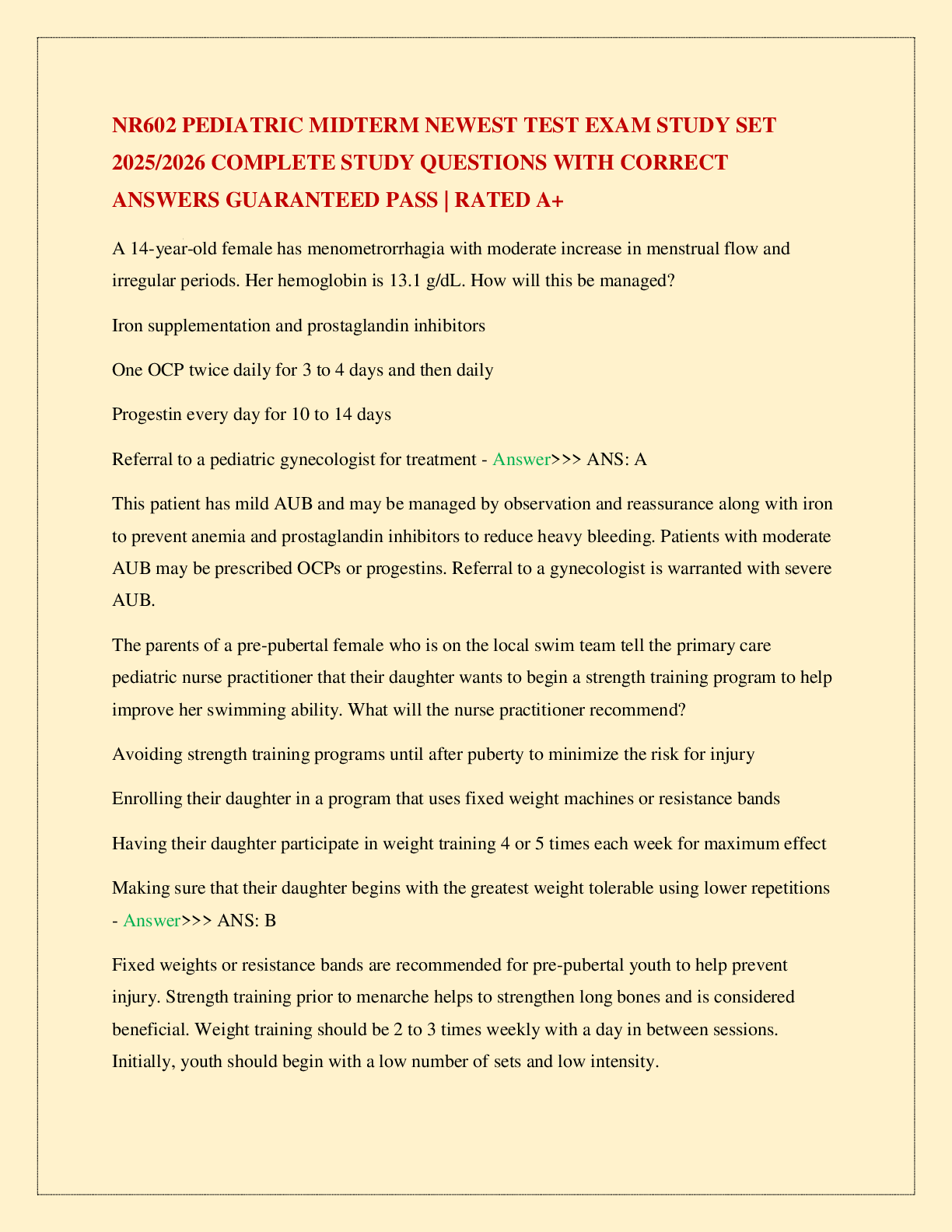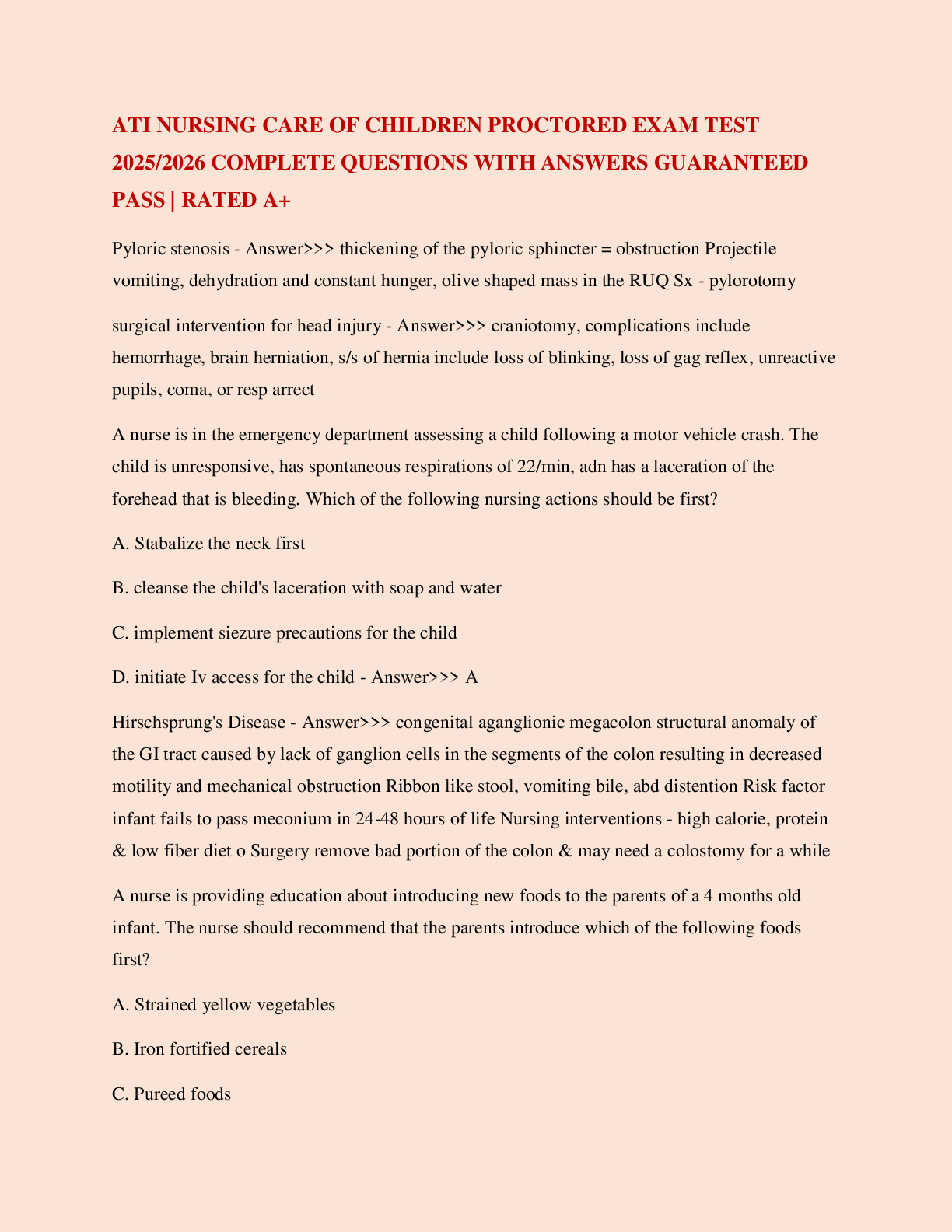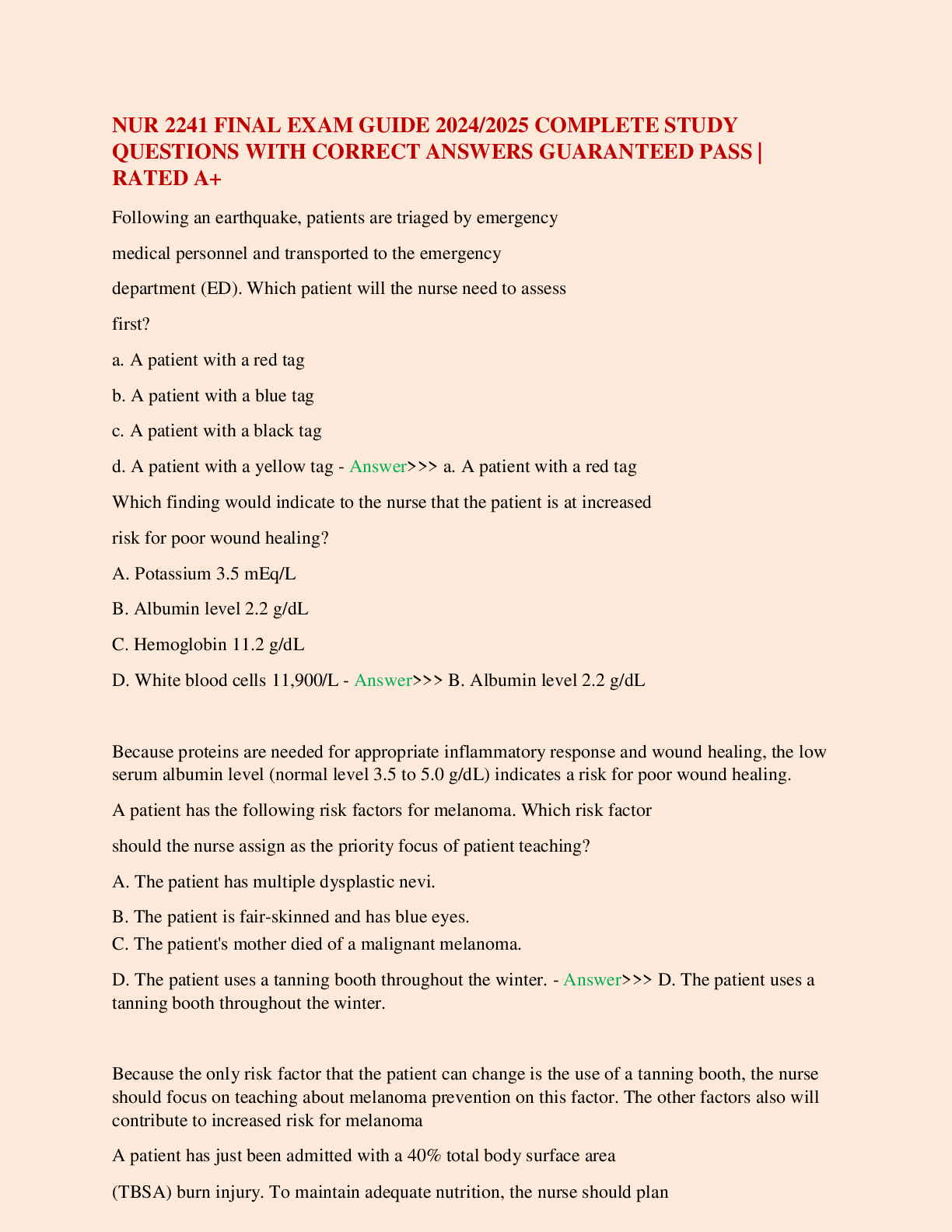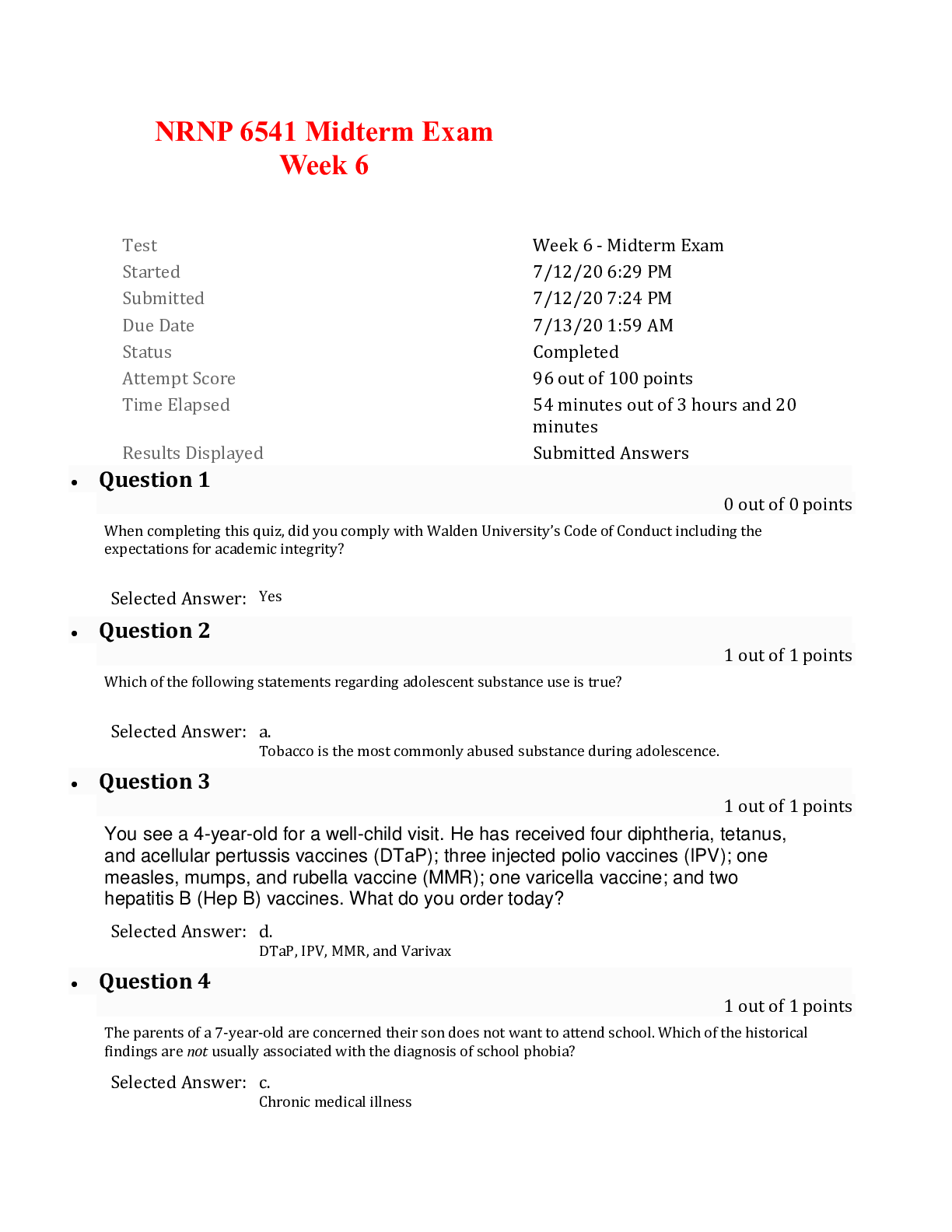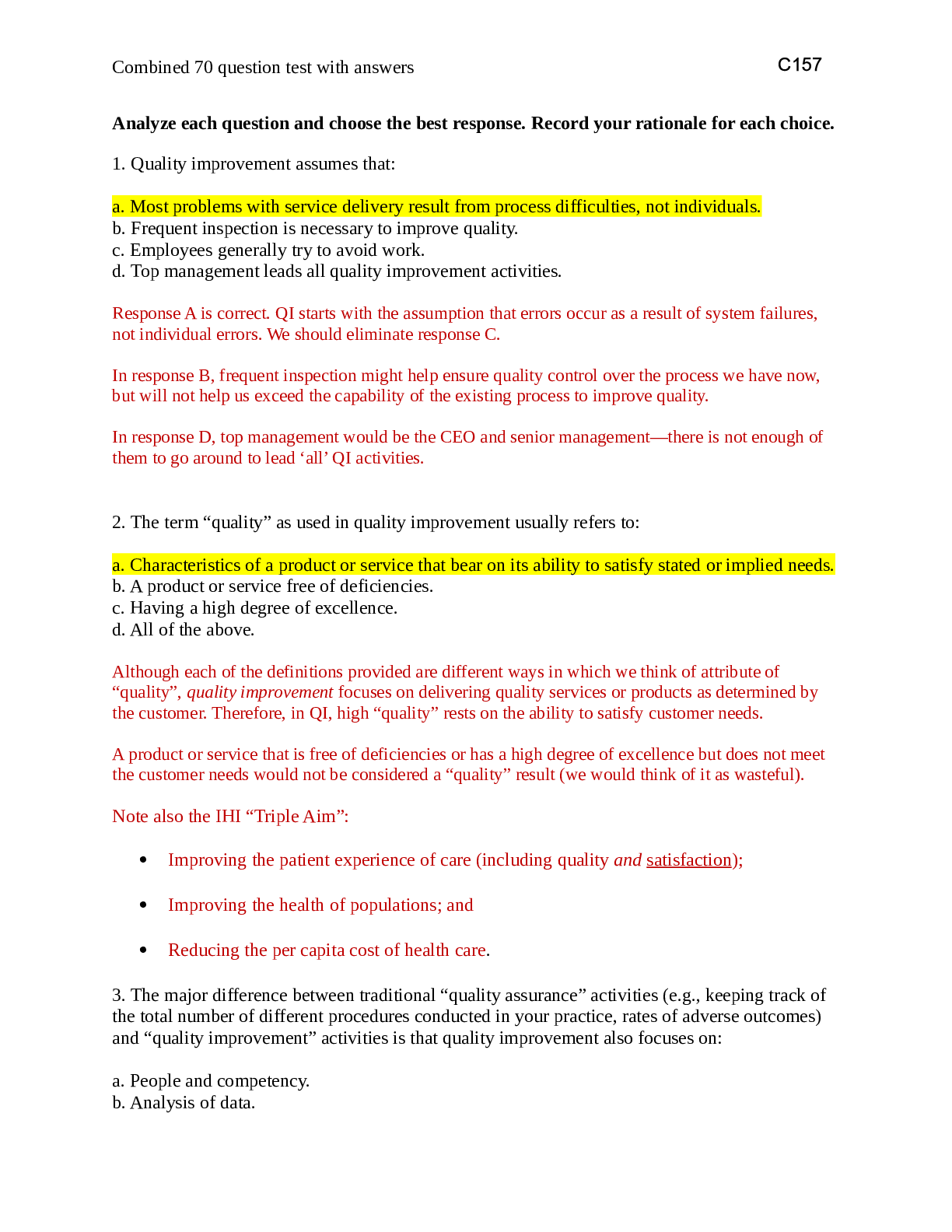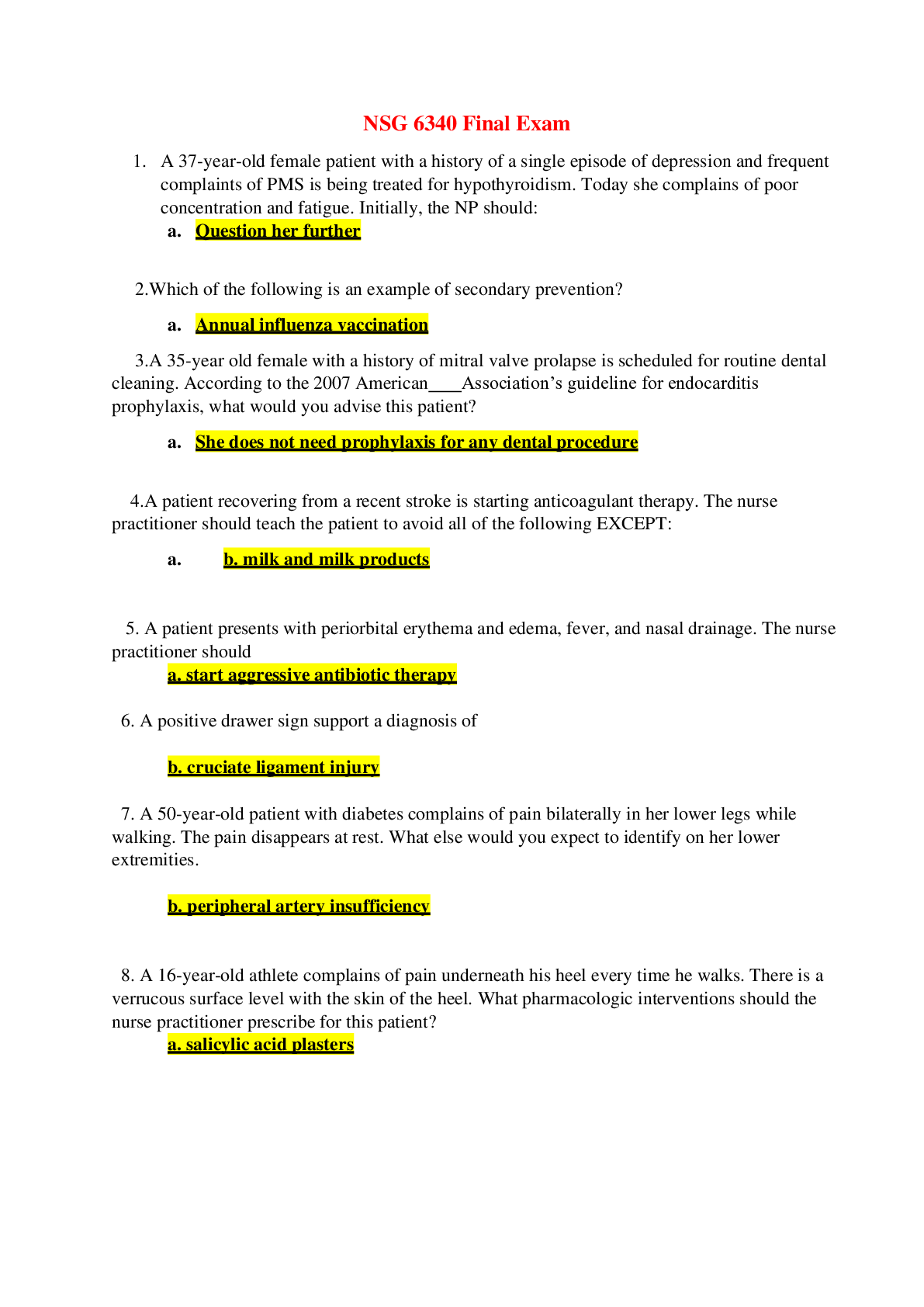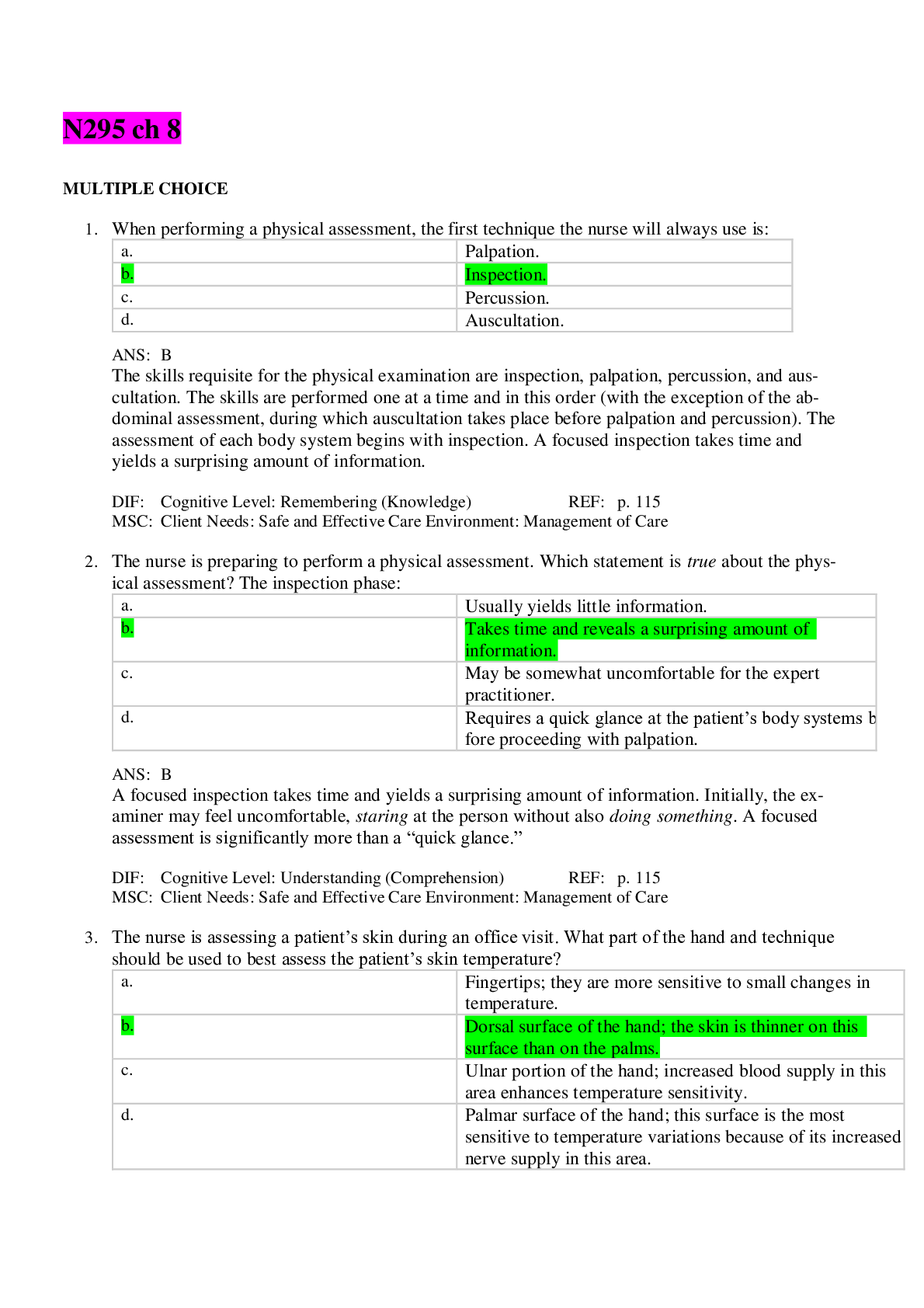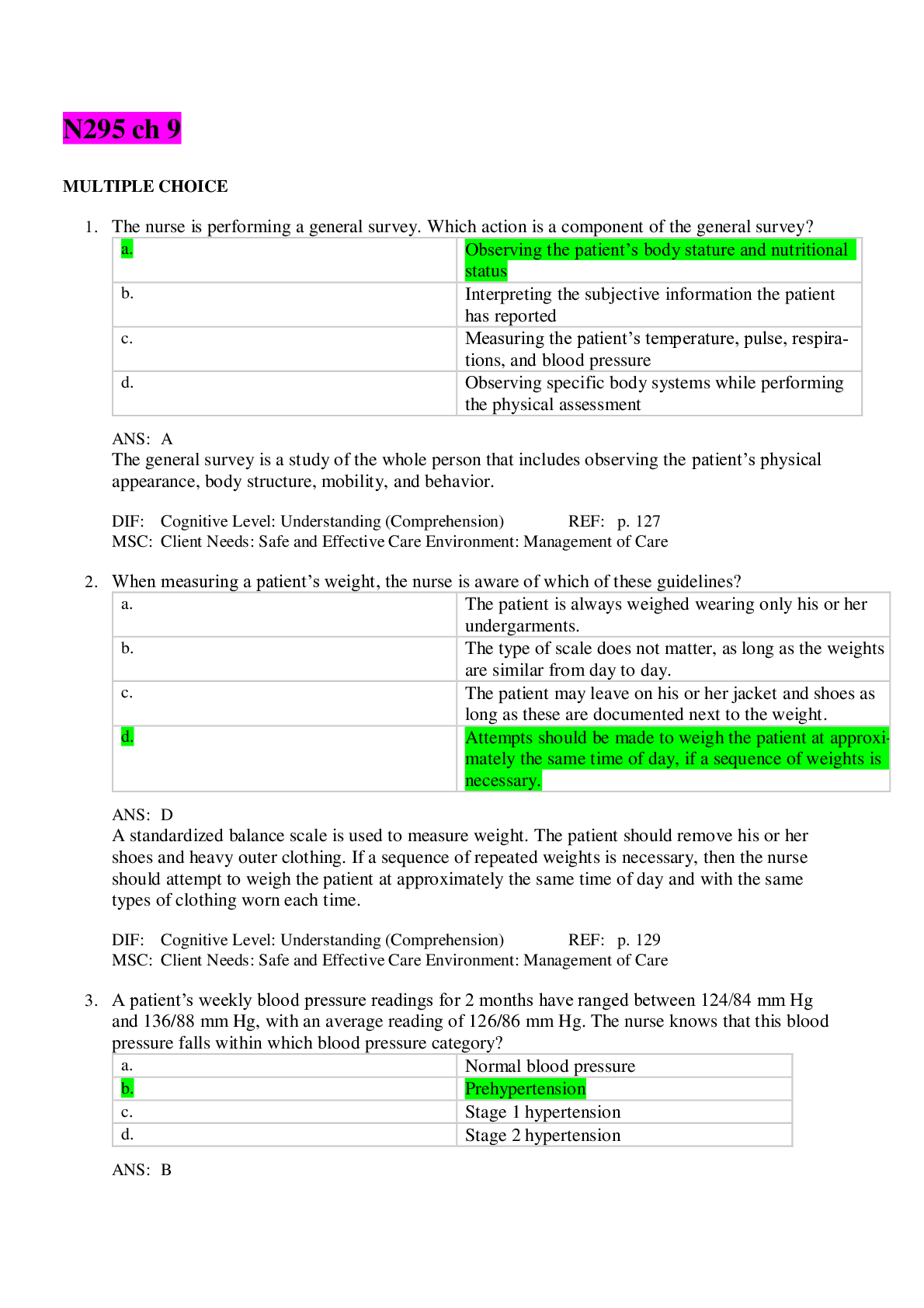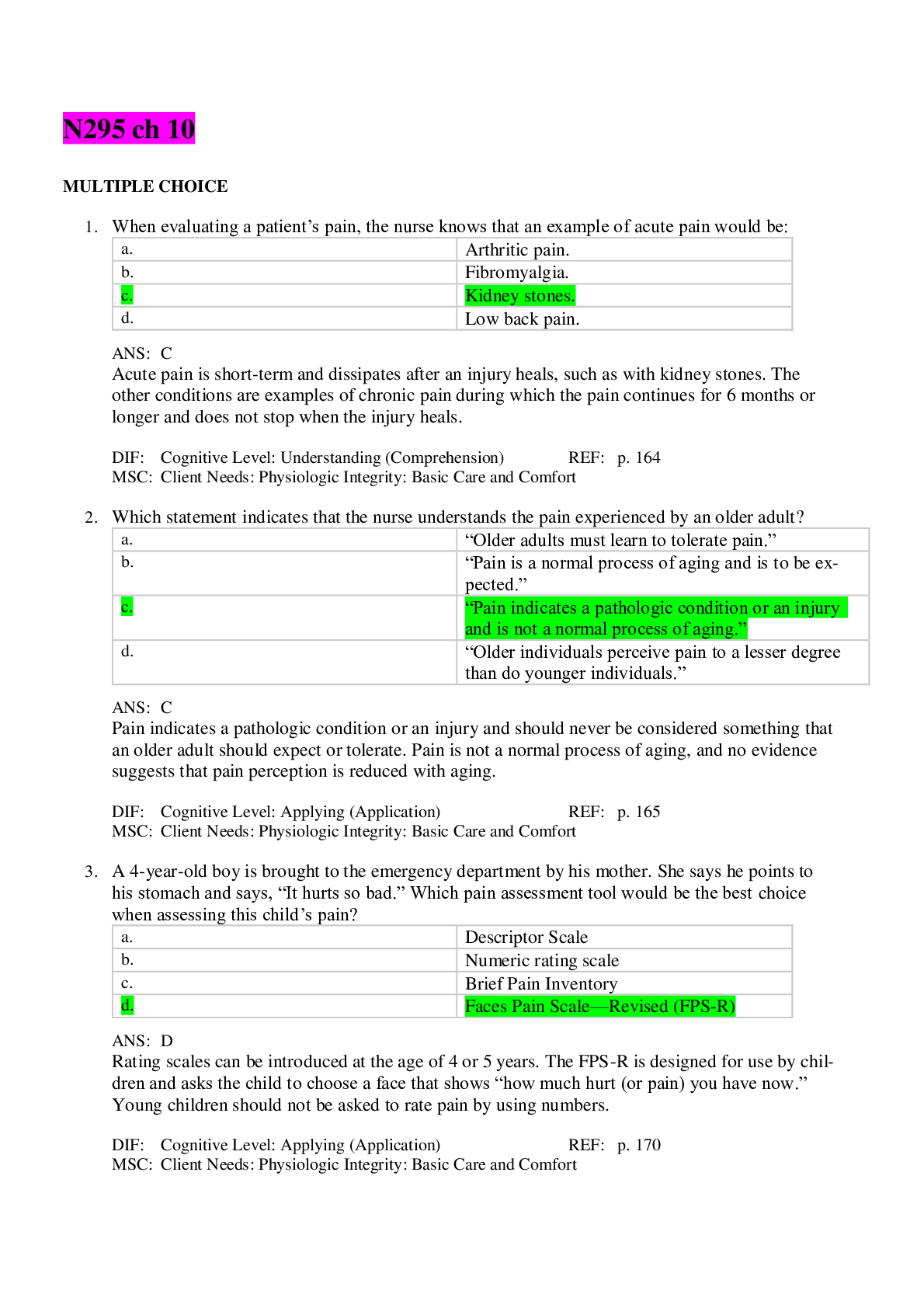Health Care > EXAM > CANCER AND ONCOLOGY NURSING NCLEX EXAM 2 50 CORRECT QUESTIONS AND ANSWERS WITH RATIONALES GUARANTEED (All)
CANCER AND ONCOLOGY NURSING NCLEX EXAM 2 50 CORRECT QUESTIONS AND ANSWERS WITH RATIONALES GUARANTEED PASS | RATED A+
Document Content and Description Below
CANCER AND ONCOLOGY NURSING NCLEX EXAM 2 50 CORRECT QUESTIONS AND ANSWERS WITH RATIONALES GUARANTEED PASS | RATED A+ A cervical radiation implant is placed in the client for treatment of cervical c... ancer. The nurse initiates what most appropriate activity order for this client? A. Out of bed ad lib B. Ambulation to the bathroom only C. Bed rest D. Out of bed in a chair only Correct Correct Answer: C. Bed rest Option C: The client with a cervical radiation implant should be maintained on bed rest in the dorsal position to prevent movement of the radiation source. The head of the bed is elevated to a maximum of 10 to 15 degrees for comfort. The nurse avoids turning the client on the side. If turning is absolutely necessary, a pillow is placed between the knees and, with the body in straight alignment, the client is logrolled. What should a male client over age 52 do to help ensure early identification of prostate cancer? A. Have a transrectal ultrasound every 5 years B. Perform monthly testicular self-examinations, especially after age 50 C. Have a digital rectal examination and prostate-specific antigen (PSA) test done yearly Correct Have a complete blood count (CBC) and blood urea nitrogen (BUN) and creatinine levels checked yearly Correct Answer: C. Have a digital rectal examination and prostate-specific antigen (PSA) test done yearly Option C: The incidence of prostate cancer increases after age 50. The digital rectal examination, which identifies enlargement or irregularity of the prostate, and PSA test, a tumor marker for prostate cancer, are effective diagnostic measures that should be done yearly. Options A and D: A transrectal ultrasound, CBC, and BUN and creatinine levels are usually done after diagnosis to identify the extent of the disease and potential metastases. Option B: Testicular self-examinations won’t identify changes in the prostate gland due to its location in the body. A male client complains of sporadic epigastric pain, yellow skin, nausea, vomiting, weight loss, and fatigue. Suspecting gallbladder disease, the physician orders a diagnostic workup, which reveals gallbladder cancer. Which nursing diagnosis may be appropriate for this client? A. Chronic low self-esteem B. Disturbed body image C. Anticipatory grieving D. Impaired swallowing Correct Correct Answer: C. Anticipatory grieving Option C: Anticipatory grieving is an appropriate nursing diagnosis for this client because few clients with gallbladder cancer live more than 1 year after diagnosis. Option A: Chronic low self-esteem isn’t an appropriate nursing diagnosis at this time because the diagnosis has just been made. Option B: Although surgery typically is done to remove the gallbladder and, possibly, a section of the liver, it isn’t disfiguring and doesn’t cause Disturbed body image. Option D: Impaired swallowing isn’t associated with gallbladder cancer. A male client is in isolation after receiving an internal radioactive implant to treat cancer. Two hours later, the nurse discovers the implant in the bed linens. What should the nurse do first? A. Leave the room and notify the radiation therapy department immediately B. Put the implant back in place, using forceps and a shield for self- protection, and call for help C. Pick up the implant with long-handled forceps and place it in a leadlined container D. Stand as far away from the implant as possible and call for help Correct Answer: C. Pick up the implant with long-handled forceps and place it in a leadlined container Option C: If a radioactive implant becomes dislodged, the nurse should pick it up with long-handled forceps and place it in a lead-lined container, then notify the radiation therapy department immediately. The highest priority is to minimize radiation exposure for the client and the nurse; therefore, the nurse must not take any action that delays implant removal. Options A, B, and D: Standing as far from the implant as possible, leaving the room with the implant still exposed, or attempting to put it back in place can greatly increase the risk of harm to the client and the nurse from excessive radiation exposure. Jenny with an advanced breast cancer is prescribed Nolvadex (tamoxifen). When teaching the client about this drug, the nurse should emphasize the importance of reporting which adverse reaction immediately? A. Anorexia B. Headache C. Hearing loss D. Vision changes Correct Answer: D. Vision changes Option D: Tamoxifen, a selective estrogen receptor modulator (SERM) causes ocular side effects such as dryness, irritation, and cataracts. The client must report changes in visual acuity immediately because this adverse effect may be irreversible. Options A and B: Although the drug may cause anorexia, headache, and hot flashes, the client need not report these adverse effects immediately because they don’t warrant a change in therapy. Option C: Tamoxifen isn’t associated with hearing loss. [Show More]
Last updated: 7 months ago
Preview 5 out of 30 pages

Loading document previews ...
Buy this document to get the full access instantly
Instant Download Access after purchase
Buy NowInstant download
We Accept:

Reviews( 0 )
$20.50
Can't find what you want? Try our AI powered Search
Document information
Connected school, study & course
About the document
Uploaded On
Dec 27, 2024
Number of pages
30
Written in
Additional information
This document has been written for:
Uploaded
Dec 27, 2024
Downloads
0
Views
14


